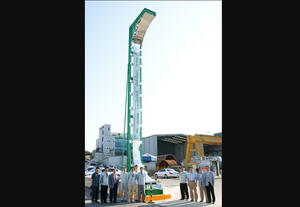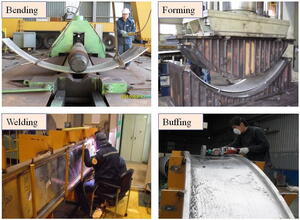A tall accomplishment
Two thermal shield segments—the outboard segment and the inboard segment—will be manufactured separately by Korea and then assembled to form a full torus shape. As an open structure, each segment is susceptible to distortion caused by cutting, machining or welding. "It is very important to validate all design and requirement parameters before beginning fabrication," stresses Chung. "The tolerance requirements for the joints in particular are very strict."
During the fabrication of the 10° inboard section mockup, each step of the manufacturing process was validated. Panel thickness and distortion were measured after the bending and forming stages; all welds were successfully verified; and the machining processes were tested. One important finding from the mockup fabrication was that the inboard segment is more flexible than expected, making the handling jig essential during fabrication. However, the structural flexibility of individual segment is beneficial for the assembly of the 40° sector.
"We now plan to make another mockup—the thermal shield outboard 10° section—which will be assembled with the inboard section," says Chung. "These mockups will be used in the test of silver electroplating processes."
The detailed design of the ITER thermal shield will be reviewed in 2011. The beginning of fabrication is expected in early 2012.



